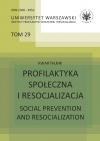
We kindly inform you that, as long as the subject affiliation of our 300.000+ articles is in progress, you might get unsufficient or no results on your third level or second level search. In this case, please broaden your search criteria.

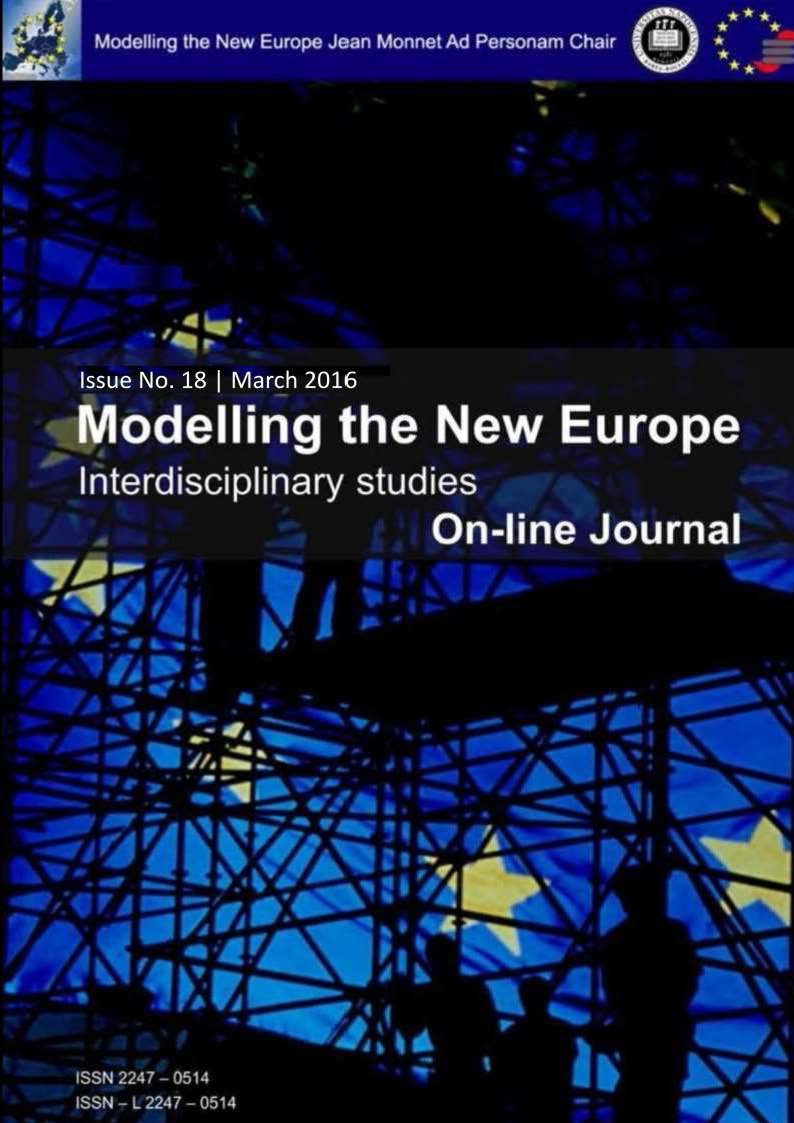
The article explores the political consequences of successive alternations in power in Bucharest and Chişinău on the bilateral relations between Romania and the Republic of Moldova. The main interrogation is whether and how Romania’s accession in the European and Euro-Atlantic order influenced the way in which both capitals relate to each other. As the comparative research clearly indicates, predictability and consistency in foreign policy is to a large extent depending on the status of the country in relations to a stable system of values, policies and institutions.
More...
The Romanian outflow of migrants towards EU, a massive labour flow occurring during the last two decades could be interpreted as a significant pilot case for the process of urgently conceiving adequate policy measures in the capital area of immigration towards EU. Reviewing the most important features of the Romanian emigration, we try to identify commonalities and issues that could be turned into relevant proposals for tackling this domain in the optimal way, both economically and socially. Meanwhile our paper attempts to forecast the situation of the future outflows from Romania, in conjunction with the new developments of the domestic and the EU labour markets.
More...
Although there have been some important contributions to the study of the relationship between the Portuguese Assembleia da República and the institutional system of the European Union, more research and studies are required in order to examine the multiple features of that relationship. Bearing that in mind, this article will analyse in particular the role of the Assembleia da República’s plenary in relation to European matters, by systematizing the plenary debates particularly addressing EEC/EU matters, which took place in Parliament after Portugal’s accession to the European project, from the IV Legislature (1985-1987) through the XI Legislature (2009-2011) and by assessing the intensity and the evolution of plenary sessions devoted to this subject during those 26 years. This article therefore seeks to present a quantitative analysis of the number of plenary debates dedicated to European matters held in each legislature, while also providing a qualitative approach regarding the contents of those debates. Also included is an analysis of the changing legal framework in which mandatory plenary sessions devoted to EU affairs have been held over the years, covering the latest developments introduced by the entry into effect of the Lisbon Treaty and of Law no. 21/2012 of May 17, which amends Law no. 43/2006 of August 25, on the Assembleia da República’s monitoring, assessment and pronouncement regarding the development of the European Union.
More...
This paper brings into focus two major innovations of European identity: the Liber Augustalis (1231) and Paneuropa (1923). It discusses several concepts of modern Europe and their possible medieval origins in the first written constitution of government in the Western tradition. The purpose of the constitutiones was to reign in these regimes and unite them under a single rule of law that defined the rights, powers, and duties of each of the components, purpose that mirrors the labors of the European Union today. We gaze into the ideological and terminological correspondences between the Liber Augustalis and Paneuropa in order to understand the origins of the best example of Pan-Europeanism: the European Union. Introspection on the machinations of the main European power of the thirteenth century that had one language (i.e. Latin) and wanted to create one law, offers a better understanding of the signs manifested by the Pan-European movement, with English serving as main language, slowly heading towards Europeanism. We contest the hypotheses regarding the primacy of the Paneuropa manifesto as the first popular movement for a united Europe, and we bring arguments that Europeanism is an heirloom of medieval origins, and that these constitutiones were not confined to defining the structures, procedures, rights, powers, and duties of government as later constitutions would be.
More...
Wallachia represents an interesting environment, not just for the Eastern European history itself, but also defines various expressions in mural art. The leaders are represented most of the times on the walls of churches that they have built. These paintings have many particularities, and, besides the clothing, the „votive” paintings, as we call them, are revealing good knowledge of the art of composition. It is like a single genre: „the votive painting”, but no work of this type looks like any other. Matei Basarab (1635-1654), Şerban Cantacuzino (1678-1688), Constantin Brâncoveanu (1688-1714), Constantin Mavrocordat (six times prince of Wallachia), are only a few who have their portraits integrated into the fresco surfaces. The paintings are hiding problems to resolve in dealing with the space, the light and the chromatic element. There are various representations of the same character, some contemporary, some made years after. It is there a sense of mystery in structure or in the semiotic of forms and even, the semiotic of some decoration. The portraits in murals represent a mirroring of a noble personality on a humble and yet, monumental surface: the wall of a church located in a forest or in an old town. Not just the personalities have their place in history, but also their portraits should have the proper place in the history of art.
More...
Jean Baudrillard’s postmodern metaphysics proposes a completely new system in its dialectical approach regarding the analysis of postmodern culture and society. Living in the age of speed, the author of famous postmodern philosophy like “America”, “Simulacra and Simulation”, “The System of Objects” or “The Agony of Power” explains the shortcomings of the secularized postmodern world and finds a comprehensive way of explaining the loss of meaning in the world where contemporary media, financial drive, multinational capitalism and super urbanization contribute to a high extent to the creation of an artificial hyper reality in which the real and the unreal are merged into one. His analysis provides an account for the cultural void, which can be perceived in today’s highly computerized and technological systems. He then introduces the concept of simulation of reality to relate it to the human experience, by explaining the fact that, in the postmodern society, symbols and signs have replaced all reality and meaning. Language plays a more important role in delimiting power relations within society and the sign language replaces the real meaning.
More...
This paper examines how Jean Renoir's films sought to initiate a spirit of integration in French and other European societies. Renoir observed that, historically and unfortunately, large sections of the population like women and minorities were deprived of many fundamental rights. Renoir strongly believed in a just and equitable social order. He realized that social justice could only be achieved through a wide and comprehensive integration of all constituent groups forming a social milieu. He thus proposed equal rights for women and the under-privileged common people who formed the majority of the any population. Renoir also appealed for the majority to tolerate and embrace the "foreign migrants" who were usually ostracized in their new environments, in order to foster social diversity. Renoir’s aim was to achieve the greater good of all. A forerunner in espousing such a liberal idea, Renoir believed that France and Europe could lead by example.
More...
In contemporary societies, communication plays a paramount role and is an indispensable form of social and political mediation. The function of communication is enhanced in the context of the European Union, since the large territorial dimension, the different countries involved, and the relatively new political institutions with respect to the nation states require an intensive communicative exchange in order to strengthen the process of cooperation, development, and integration. The reference to the principles of communication, as highlighted by the theories of Otto Apel and Jürgen Habermas, offers a concrete possibility to shape communication from an ethical standpoint, and allows for conceiving a pluralistic, democratic process. With the integration of some aspects of the communitarian thinking, the idea of an ethics of communication provides some concrete chances of reflecting on the relation between people and institutions, and of conceiving of a communication which be more attentive to the present challenges and which secure a more effective and respectful interweaving among the different subjects and instances concerned.
More...
In the aftermath of World War II, the informal association of intellectuals known as Gruppe 47 found itself in a troublesome position in its attempt to rebuild a new political culture in postwar Germany. My analytical approach to the ideological controversies, paradoxes and inconsistencies of the group’s orientation will provide some relevant tools for explanation and put forward confrontational dilemmas for assessing the overall activities of Gruppe 47 members. This type of approach is risky and difficult for two main reasons: i) first, because the membership of the Group was non-permanent and circumstantial and ii) second, because the overall activity of the Group seemed to move indecisively between two main coordinates (i.e., an aesthetic and literary programme on the one hand, and a politics of culture / literature, on the other). Intuitively, I think that the study of literary culture in post-war Germany could function as a strong indicator of the status and transformations of political culture in this country and may be more successful than conventional historiography, political science or institutional theories in explaining what really happened in Germany in the period in question.
More...
Parents are the primary agents of socialization and hold the great influence on child behaviour in early childhood, considered to be a crucial period of socialization. The family type and the parenting styles have significant influence on socialization process. Although the notion of socialization became less central to sociological debates, the idea of families having a major role in primary socialization process is still quite central (Gillies, 2011). The present paper analyses the factors affecting socialization of children in Romanian families. The first part of the paper will be dedicated to a review of literature regarding the influence of the family in the socialization process of children. In the second part the author will present the results of a study case conducted in Bucharest in 2015 using a research methodology based on PAPI questionnaire with parents having children between 0 and 6 years enrolled in ECEC services. The analysis will focus on manner of exercising parenting styles in Romanian family. The factors affecting socialization of children will be also highlighted according to the data form the field survey. The results have implications for researchers, policy makers and practitioners from the family policy area.
More...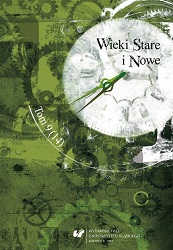
The author’s aim was to present two literary traditions which refer to the way in which the image of Gaius Octavius, who went on to become Emperor Augustus, which was created in order to legitimate his assumption of power, was presented. The first episode where these traditions are so distinctly perceptible is Gaius Julius Caesar’s second Hispanian campaign (46—45 BC). The representatives of the first tradition (Nicholas of Damascus, Gaius Suetonius Tranquillus) attempted to emphasise Octavius’s personal qualities which were supposed to make him a vigorous and resolute leader. This suggests that the sources of this tradition should be sought in the period of the civil wars when Octavius had to face above all the challenge presented by Mark Anthony in the context of propaganda. Whereas the representatives of the second tradition (Velleius Paterculus, Dio Cassius) no longer attempted to emphasise the purported achievements of Octavius and they concentrated instead on the question of legitimisation resulting from the appurtenance to Caesar’s family. This may indicate that the tradition emerged in the period when one was no longer obliged to be held accountable for the doubtful military achievements of the years 44—36 BC, and what results from the following: when one was no longer obliged to respond to political invectives hurled by his adversaries. In this approach instead of emphasising military accomplishments it was much more important to indicate the decision that was made by Caesar, and perhaps the vaticinal signs, for such a distinguished individual as the murdered dictator doubtlessly was, could not misjudge the talents of the successor whose greatness was even foretold by the gods themselves.
More...
Heretofore little importance was attached to considerations connected with ancient historians presented in “Historia Augusta”, in the biographies bear the name of Flavius Vopiscus of Syracuse. However, these brief texts perhaps may enable us to understand the reason for which the author concealed his name by using six pseudonyms, and they account for the way in which he approached work with the sources. In the principal biographies of the Antonines and the Severi he drew from the imperial biographies by Marius Maximus whose work was positively evaluated in his considerations. The work contained information which was of paramount importance for the imperial biography such as the origin of the ruler or a description of his character. In the subsequent part of the “Historia Augusta” its creator used other sources which represented such literary genres as history and breviaria. We may infer from Scriptor’s methodological considerations that he held these literary genres in low estimation; he did not mention even one author of these sources. This supposedly influenced his polemical attitude to these source materials and the way in which he used them — he frequently interspersed their narrations with themes drawn from the works of other historians.
More...
The text presents the scholarly and popular science output in the field of regional history produced by Łucja Charewiczowa, a female Lvovian historian of the inter war period. There is a discussion of the most important works of the Researcher in this field, with special emphasis on their conceptualisation, construction, empirical approach and literary qualities. The outline also constitutes an attempt to present the peculiar nature of Charewiczowa’s writings in the context of the regional history works (the social, historical and economic orientation, a strongly marked presence of female figures, educational and patriotic aspects). Moreover, it also emphasises the research and narrative approaches of the Lvovian author which were ground breaking in Poland.
More...
The article is devoted to the stages of the construction of the Pałac Kultury i Nauki in Warsaw — from the proposal of the construction to the handing over of the building by the Soviet authorities to the Polish party. On the basis of research the author established that the deputy prime minister of the U.S.S.R., Vyacheslav Mikhaylovich Molotov, suggested the construction of the palace on 22 July 1951 instead of 3 July, according to some research works. Then the author describes the circumstances of the creation of the plans of the construction of the high-rise as well as the signing of agreements concerning the initiation of the endeavour to erect the PKiN which was a logistic challenge. Owing to a search query in the archives the author attempted to present the realities of the collaboration between Polish and Soviet labourers which had little to do with the ones presented by the propaganda of that time. For example, on the basis of declassified documents the author managed to provide the number of Poles who lost their lives during the construction of the PKiN.
More...

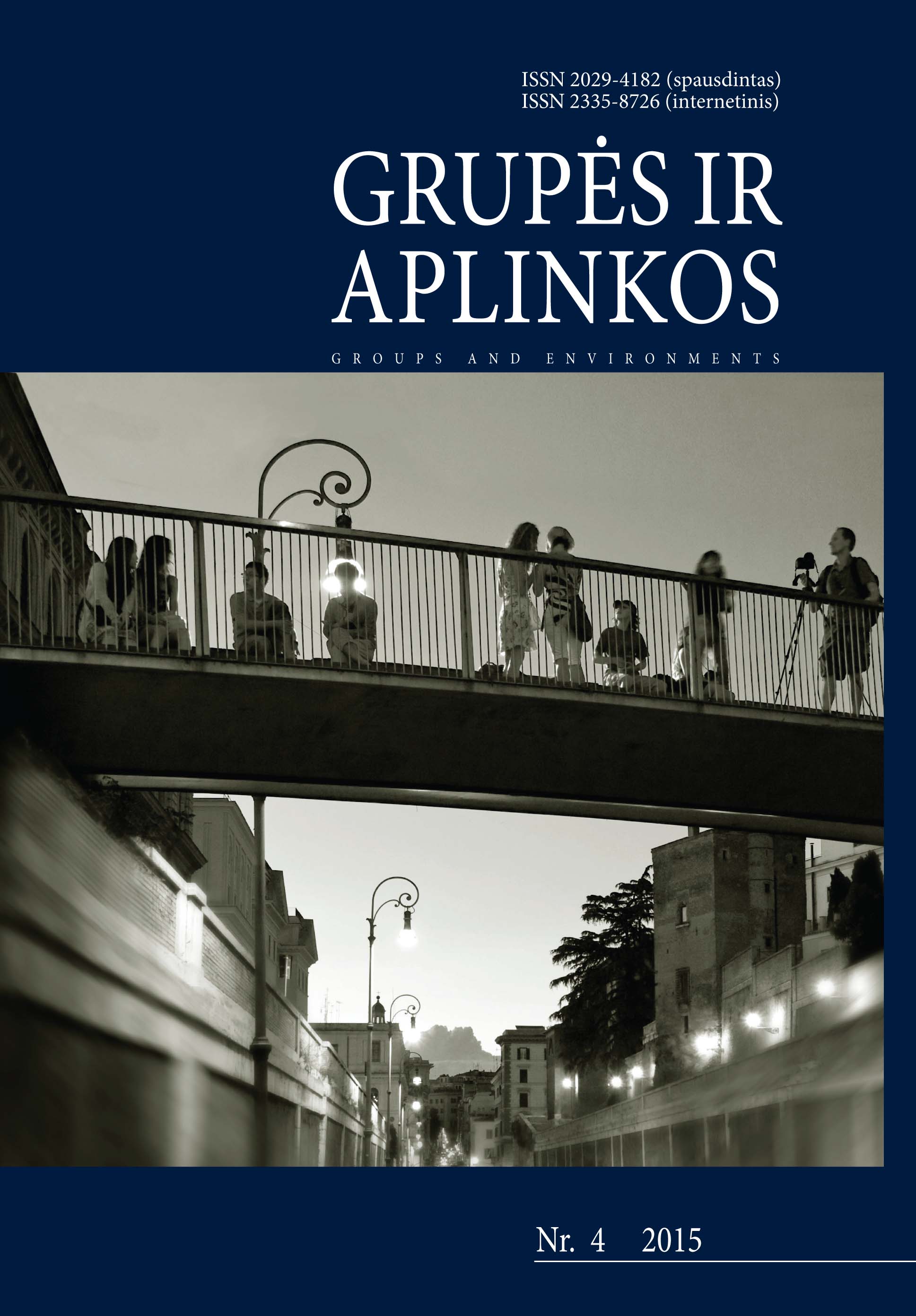
This paper presents a conceptual framework for research on cultural groups which existed in recent Soviet societies but were opposed to the regime. The framework is designed to fa¬cilitate research on social processes related to the behaviour of individuals and groups through cooperation between social researchers and IT scientists. The proposed methodology helps not only acquire knowledge about processes that took place in the societies in the recent past but can also be adapted for exploration of current processes in various other cultural groups and communities. The methodology adapts the techniques of several disciplines to the study of social problems by integrating simultaneous technical adjustments in these disciplines under a systems approach.Straipsnyje pateikiamas konceptualus sprendimas, kaip tyrinėti kultūrines grupes, kurios veikė pastarojo laikotarpio sovietinėse visuomenėse, tačiau buvo priešiškos režimui. Tyrimų progra¬ma, kurią kuriant bendradarbiauja socialiniai tyrėjai ir IT mokslininkai, prisideda prie sociali¬nių procesų (ypač tų, kurie turi įtakos asmenų bei grupių elgesiui) tyrimų palengvinimo. Pateik¬ta metodologija ne tik padeda susipažinti su sovietinio laikotarpio visuomenių procesais, bet ir gali būti pritaikoma tyrinėjant įvairius dabarties procesus įvairiose kitose kultūrinėse grupė-se ir bendruomenėse. Sisteminė prieiga suteikia galimybę techniškai patikslinti kitų disciplinų metodus, taikomus tiriant socialines problemas.
More...
Straipsnyje pristatomas Švedijos depresyviojo metalo muzikos kūrėjų ir gerbėjų neformalios organizacijos tyrimas, atliktas 2012 m. įvairiose Švedijos vietovėse. Analizuojamos dvi pagrin¬dinės depresyviojo metalo subkultūros meninės raiškos priemonės – muzika ir tapyba; atsklei¬džiami psichologiniai subkultūros dalyvių bruožai ir jų subkultūrinio identiteto konstravimas per santykį su kitais metalo muzikos subkultūros nariais bei visuomene, pažymint gilią depre¬syviojo metalo subkultūros dalyvių socialinę ir kultūrinę atskirtį. Atskleidžiant neformalią sub¬kultūros organizaciją, analizuojami internetiniai ir realūs ryšiai tinkle, kuriais subkultūros nariai perduoda vieni kitiems informaciją, idėjas ir palaiko emociškai. Depresyviojo metalo subkul¬tūros tyrimai padeda suprasti nelengvai prieinamas visuomenės grupes, susiskaidymą, dalies dabarties žmonių egzistencinę krizę.The article aims to analyse the main features of the depressive metal subculture and to consider what cultural elements and social relations influence contemporary depressive metal subcul¬ture. A related goal is to discuss how this phenomenon can be conceptualised. The discussion, based on fieldwork and other research data, focuses on the construction and expression of cul¬tural identity by musicians and fans of depressive metal. The analysis of the depressive metal subculture looks at the principles of followers’ worldview, artistic creativity and the creation of cultural surroundings. These aspects are addressed using the emic approach. The context of the subculture’s activities, the informal forms of social organisation and the relations between musi¬cians and fans in the context of globalisation are also considered. This is related to the analysis of identity construction by members of the depressive metal subculture via their relations with other metal forms of music fans and contemporary society at large. The research methodology includes participant observation, semi-structured interviews and informal conversations with informants. These were conducted as part of the fieldwork in Sweden between June 7, 2012, and September 7, 2012. The depressive metal subculture includes features that are typical to modern subcultures: the emphasis on values and beliefs, negative ap¬proach to official Medias and emphasis on authenticity in self-perception, among others. The research demonstrated that fans and musicians of depressive metal tend to identify with depressive metal subculture as part of global metal culture. They regard themselves as belong¬ing to the parent metal culture, though they also recognise some cultural and social differences. The paper argues that fans and creators of the depressive metal music differ from the rest of the metal community in the expression of emotions and the treatment of themes like suicide, psychological disorder and despair, to mention but a few. The treatment of the latter aspects dif¬ferentiates fans and musicians of depressive metal from the rigidly exoteric and macho attitude held by representatives of traditional heavy metal music. The main form of cultural expression of the depressive metal subculture is music and paint¬ing. Music, produced and performed by depressive metal groups, differs from music created within other trends of metal culture because of the introspective nature of the depressive metal subculture. The differences are manifested in lyrics of the songs and in the way of performance. The singing includes frequent cries and shrieks, which express the despair and torment felt by the performer. In painting, like in music, the representatives of the depressive metal subculture use artistic devices such as contrasts and ambiance to convey their deepest inner states. Depressive metal as a subculture is attracting a growing number of followers, mainly young and intelligent outcasts seeking de-identification with their societies and the imposed moral or ‘ethical’ conventions intended to restrain base desires. In this sense, depressive metal is a counter reaction to pre-imposed cultural dogmas and a celebration of free will as well as social anarchism. Depressive metalheads give new meaning to self-destructive behaviour. Self-mutilation and drugs are regarded as a pathway to self-discovery through transcendence of personal limita¬tions. Such modes of behaviour are considered as a form of meditation whereas scarring the body is treated as a form of subcultural capital that breaks the taboos of society and symbol¬ises stamina and the will to challenge oneself. The subculture opposes norms of society and constraints of state institutions. Depressive metal groups do not depend on outside material resources for support. Rather, they support themselves; their members live in definable commu¬nities. Real-life and virtual networks are important in maintaining relations among musicians, supporters and fans. Depressive metal fans and musicians can be regarded as socially awkward, and their behav¬iour can be associated with psychological problems regarded as both causes and results of seclu¬sion from society. It remains our conviction that a more in-depth research on this subculture needs to be done, and that medical anthropology and cross-cultural psychiatry would have an important place in this inquiry.
More...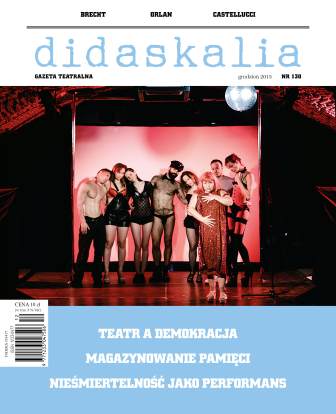
Marcin Bogucki reviews a performance My Square Lady: Von Menchen und Maschinen a British/Herman co-production by Gob Squad and Komische Oper in Berlin (premiere: 21.06.2015). The play uses a site-specific strategy to tackle the issue of relationships between people and robots, with a special focus on the emotional relationship of the artists to the machines they have created. An interesting thread of the play, and one emphasized by Bogucki, is the issue of robots' cognitive processes in the context of work on artificial intelligence. The author notes that Gob Squad have managed to weave a “fantasia on the subject of robots, which were meant to be a remedy for all of humanity's ills, and on opera as a conservative institution that tells us how to feel and how to control our emotions.”
More...